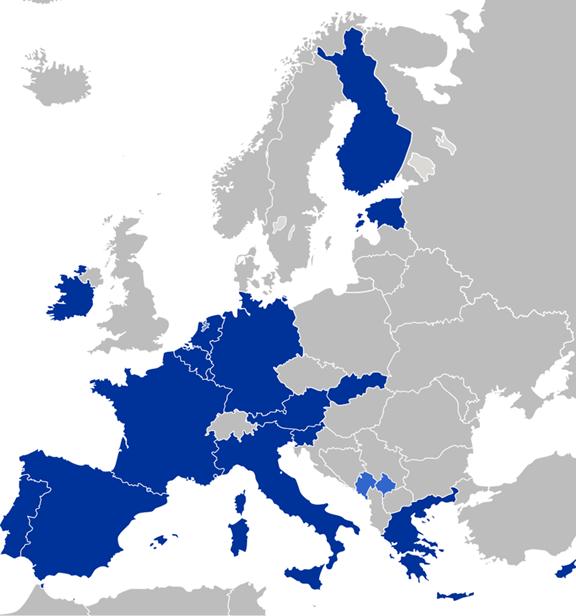Monetary union
A monetary union is a common market with a common/single currency and a common central bank. A single currency means that there cannot be separate national monetary policies within member countries, but requires the formation of a single central bank to take policy decisions on issues, such as the money supply and interest rates.
A significant example of monetary union was the introduction of the Euro in the European Union in 1999, with the full changeover to notes and coins taking place in January 2001. The members of the Eurozone are shown below.
The common central bank for the Eurozone is the European Central Bank.


Other examples - currency unions
For some further examples of currency unions, browse the Wikipedia list of currency unions. You can do this in the window below or follow the previous link to open the page in a new web window.
